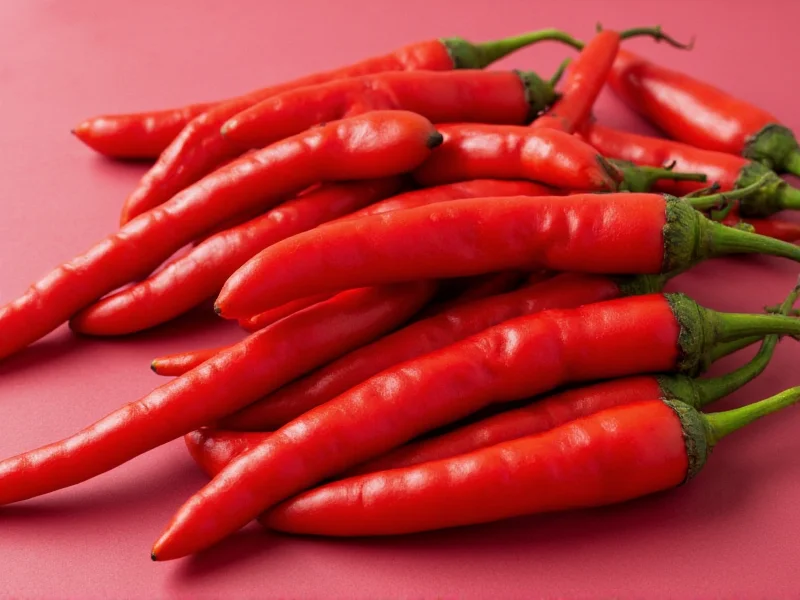Understanding what is chamoy requires exploring its unique position in Mexican culinary tradition. This vibrant sauce represents a fascinating fusion of Asian preservation techniques and Mexican flavors that has become integral to street food culture across Mexico and increasingly popular worldwide.
The Historical Journey of Chamoy
Chamoy's story begins with the umeboshi, a Japanese salted and pickled plum. Chinese immigrants brought similar preserved fruit techniques to Mexico via the Manila galleons during the colonial period. Mexican artisans adapted these methods using local fruits and chilies, creating what we now know as chamoy.
This culinary evolution represents one of the most successful examples of Mexican food fusion history. By the mid-20th century, chamoy had become a staple condiment sold by street vendors throughout Mexico, particularly in urban centers like Mexico City.
Chamoy Ingredients and Production Process
When exploring what is chamoy made of, the core components include:
| Primary Ingredient | Role in Chamoy | Common Variations |
|---|---|---|
| Preserved fruit (apricot, plum, mango) | Provides base sweetness and tang | Seasonal fruits like tamarind or watermelon rind |
| Chili peppers (typically árbol or de árbol) | Creates signature heat | Guajillo for milder versions, habanero for extreme heat |
| Vinegar or lime juice | Acid component for preservation and tang | Lime preferred for authentic street-style chamoy |
| Salt | Preservative and flavor enhancer | Often combined with sugar for balance |
| Sugar or piloncillo | Counteracts acidity and heat | Amount varies by regional preference |
The traditional production process involves:
- Fruit preservation in brine or vinegar solution
- Slow drying of the preserved fruit
- Rehydration with vinegar, chilies, and spices
- Blending to desired consistency (from chunky to smooth)
Different Forms of Chamoy
Many people searching for Mexican chamoy definition don't realize it exists in multiple forms:
- Chamoy sauce - The liquid form used as a condiment for fruits, vegetables, and snacks
- Chamoy candy - Solid version where the fruit pieces are preserved and sold individually
- Chamoy rims - Used on glasses for micheladas and other Mexican beverages
- Chamoy paste - Thicker consistency used in cooking and marinades
Each variation serves different culinary purposes while maintaining the signature sweet-sour-spicy profile that defines authentic chamoy.
Culinary Applications of Chamoy
Understanding how to use chamoy in cooking reveals its versatility in Mexican cuisine:
- Street food enhancement - Drizzled over fresh fruit cups (especially mango, watermelon, and jicama)
- Snack seasoning - Combined with tamarind paste and chili powder for candies like pulparindo
- Marinade base - Used for meats, particularly chicken and pork
- Cocktail ingredient - Creates the signature flavor in micheladas and other Mexican beers
- Dipping sauce - Served with tamarind candies, cucumber slices, and even potato chips
One common question is about the difference between chamoy and tamarind. While tamarind provides a distinct sour base often used in chamoy recipes, chamoy itself is a complete condiment that incorporates tamarind along with multiple other flavor elements. Tamarind alone lacks the complex sweet-salty-spicy balance that defines chamoy.
Regional Variations Across Mexico
Chamoy isn't uniform across Mexico. Regional preferences have created distinctive variations:
- Northern Mexico - Typically spicier with more árbol chili and less sweetness
- Central Mexico - Balanced profile with moderate heat and noticeable sweetness
- Southern Mexico - Often incorporates local fruits like mamey and features complex spice blends
- Coastal regions - Frequently includes citrus elements like orange or tangerine
These regional differences reflect local agricultural products and cultural preferences, making chamoy a dynamic representation of Mexico's culinary diversity.
Where to Find Authentic Chamoy
For those wondering where to buy chamoy, several options exist:
- Mexican grocery stores (both physical and online)
- Specialty Latin American food markets
- Street vendors in areas with significant Mexican populations
- Major online retailers that carry international food products
When selecting chamoy, look for products listing natural ingredients without artificial colors or excessive preservatives. Traditional chamoy should have a deep reddish-brown color from the natural ingredients rather than bright artificial red.
Chamoy in Contemporary Food Culture
Chamoy has evolved beyond traditional Mexican cuisine to influence global food trends. Chefs worldwide incorporate chamoy into fusion dishes, from chamoy-glazed salmon to chamoy-infused cocktails. The sauce's complex flavor profile appeals to modern palates seeking multi-dimensional taste experiences.
Food enthusiasts exploring chamoy sauce ingredients will find it increasingly featured in cooking shows and food blogs, introducing this traditional condiment to new audiences. Its versatility makes it suitable for both traditional Mexican dishes and innovative culinary creations.
FAQ About Chamoy
Is chamoy the same as Tajín?
No, chamoy and Tajín are different products. Tajín is a dry chili-lime seasoning, while chamoy is a wet sauce or paste made from preserved fruits. They're often used together - Tajín sprinkled on top of chamoy-coated fruits.
Does authentic chamoy contain sugar?
Traditional chamoy recipes include sugar or piloncillo (unrefined cane sugar) to balance the sour and spicy elements. The amount varies by regional style, with some versions being quite sweet and others emphasizing the sour-spicy profile.
Can chamoy be made at home?
Yes, chamoy can be made at home using dried fruits, chilies, vinegar, lime juice, and salt. The process involves rehydrating the dried fruit in a vinegar-chili solution, then blending to the desired consistency. Homemade versions allow customization of sweetness and heat levels.
Is chamoy vegan?
Most traditional chamoy is vegan as it's made from fruits, chilies, vinegar, and salt. However, some commercial versions may contain non-vegan ingredients like honey or fish sauce, so checking labels is recommended for strict vegans.
How long does chamoy last once opened?
Commercially produced chamoy typically lasts 6-12 months after opening when refrigerated. Homemade chamoy should be consumed within 1-2 months. The high salt and acid content act as natural preservatives, but refrigeration is recommended for safety and quality.











 浙公网安备
33010002000092号
浙公网安备
33010002000092号 浙B2-20120091-4
浙B2-20120091-4